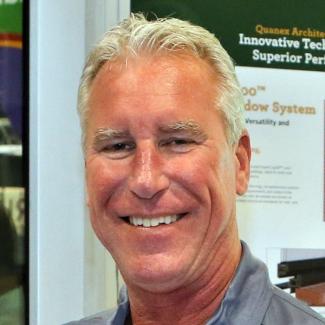No matter how technology has evolved over the years, the essential functionality and intent of windows and doors has remained fairly simple when you think about it. No matter how big, or what color, or what they’re made of, fenestration products grant interior environments access and views into the outdoor world around us, where and when occupants want it.
I’ve written about the benefits and how design trends are evolving to further merge interiors with the outdoors in interesting ways. We’re seeing taller, wider, and heavier windows being used all across the construction industry, coupled with unique demands and customization for all kinds of applications. There are a lot of new considerations to be made here. For example, Window + Door recently featured how hardware manufacturers are working to keep up with challenges posed by larger, heavier units that place higher emphasis on aesthetic appeal along with performance.
It was an interesting piece, and it got me thinking. There’s another question at play for larger, customized windows and doors in homes that want to let more of the outdoors in—can they effectively keep the bugs out?
Screens are important, but most people don’t spend a lot of time thinking about them until they either don’t have them, or until their screens don’t work properly. Consider the sliding door screen from the consumer’s perspective: they’re a great feature that allow homeowners to take full advantage of large sliding doors but, in use, they’re frequently temperamental. Rollers can jam, the mesh can tear, and suddenly a great feature has become both an eyesore and an inconvenience. In windows, there’s also the question of whether screens can be easily removed for cleaning or for swapping with storm window inserts in colder climates.
This speaks to the need for manufacturers to consider quality, durability and performance in screens production just as much as any other part of the window. And as windows and doors get bigger, let in more of the outdoors, and deliver aesthetic as well as performance benefits, customers will expect their screens to match.
From the manufacturer’s perspective, it’s no secret that screens production can be a headache and adding more complexity to the process isn’t ideal. Screens also aren’t where most of the value comes from for window and door makers meaning there’s less incentive to prioritize that part of the total package versus IG and framing.
So, what are the options? One thing to consider is outsourcing screens production to a dedicated manufacturer who can work with your product specifications to deliver screens to meet your needs. It’s a way to free up some resources, too, enabling shop floor workers to focus on the high-value parts of the business—quality windows and doors that live up to the changing demands and expectations of homeowners.
Whether it’s large-format windows and doors, biophilic living, or other trends, fenestration is becoming more integrated into the holistic design and structure of homes and buildings. Our industry needs to make sure that we’re delivering quality, reliability and functionality at every level to make these designs successful.
Questions or comments? You can email me directly at Eric.Thompson@Quanex.com.
